In recent months we have learned to enjoy the beauty of the innumerable gems of the historical and natural heritage that we have in this country. The small towns of Spain have become one of the best options to escape the hustle and bustle of big cities in these turbulent times that force us to keep our distance and be more cautious with protection.
Perhaps, the most unknown places are those that have begun to gain greater importance, and we have realized that we must take care of these little treasures to continue enjoying their beauty. Because travelling to one of these places is synonymous with feeling at home. The number of inhabitants, in some of them, does not surpass twenty, but they make you feel part of the village straight away.
In autumn, winter, spring or summer. Each season is different, but any of them is a good time to escape to a small town lost in the middle of nowhere.
Isoba (León) and its legendary lakes
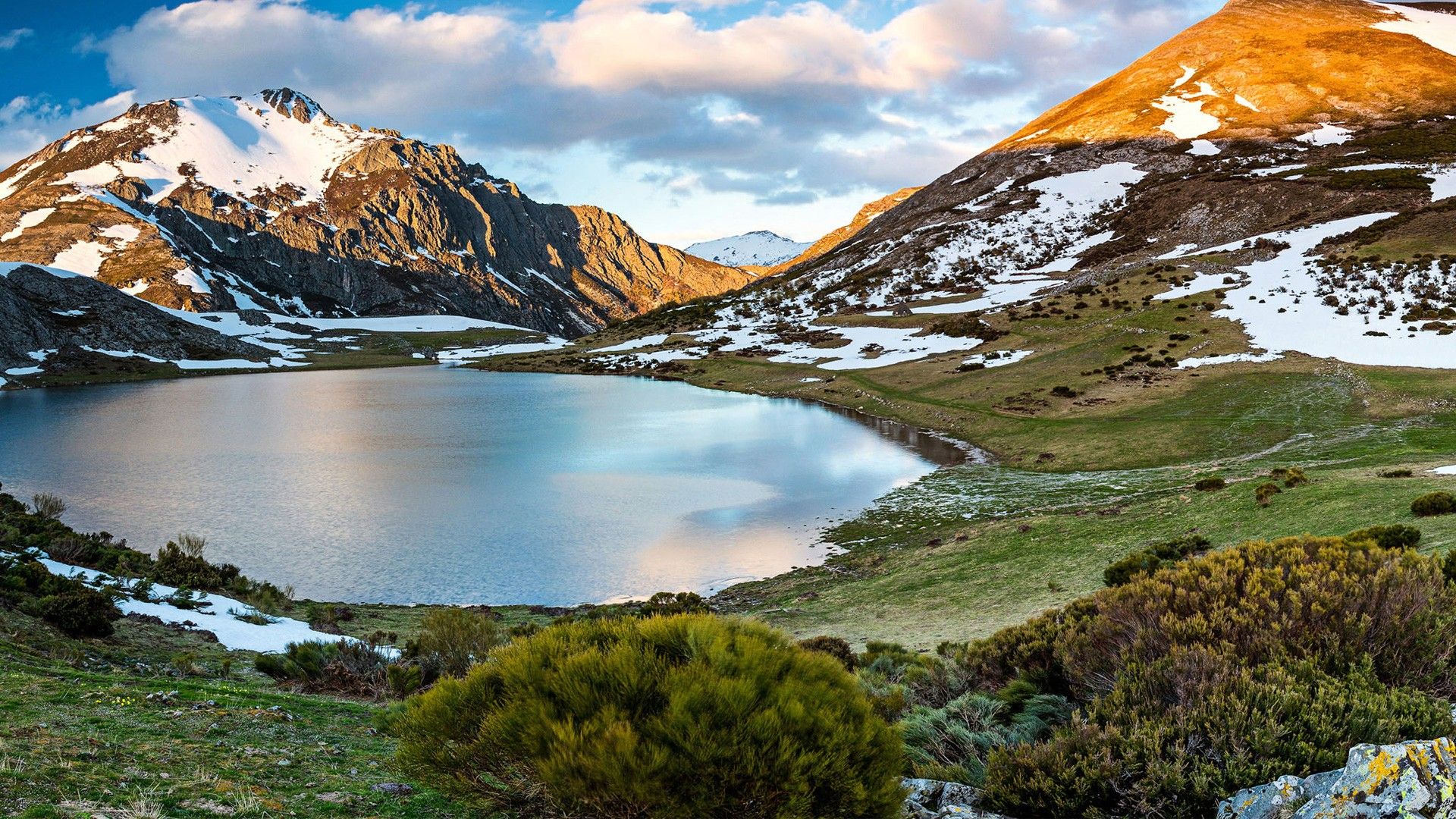
Located in the municipality of Puebla de Lillo, only 12 houses and a church make up this small hamlet of 14 inhabitants in the mountains of León. This municipality is known for its two lakes of glacial origin: Lake Ausente and Lake Isoba, two places surrounded by legends about revenge and impossible love affairs. Less than a kilometre from Lake Isoba, following the riverbed with the same name, we find a haven of peace of unequalled beauty, a small pool of crystalline waters, protected from the wind by the mountain walls and crowned by a waterfall over which a bridge crosses.
These lakes have a peculiarity in winter, and that is that, due to the low temperatures in the area, their waters sometimes freeze and become covered with snow making it difficult to distinguish the lakes from the environment, but this is really their natural state.
Beget (Girona), the hidden gem
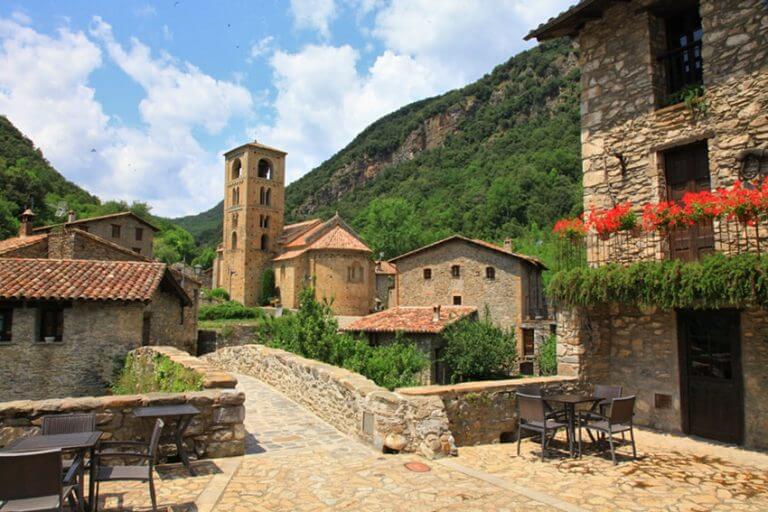
This medieval town is one of the most beautiful in Catalonia. Perhaps, the fact that access to the town is not easy, has made it go quite unnoticed to tourists. Its main attraction is the church of Sant Cristòfol, a Romanesque temple that has been declared a cultural asset of national interest. Some parts of the church date from the 10th century, although the main part was built entirely between the 12th and 13th centuries, and its interior can only be visited on Saturdays and Sundays.
The rest of the town is like a journey back in time, a set of stone houses that have maintained their original appearance over time and two medieval bridges crossing the river that divide the three neighbourhoods of the town. The surroundings of Beget are also worth a visit. In summer, its gorges are the ideal place for a refreshing swim surrounded by nature, and in autumn and spring, nothing better than a walk through its forests.
Trevejo (Cáceres), place of the Templars
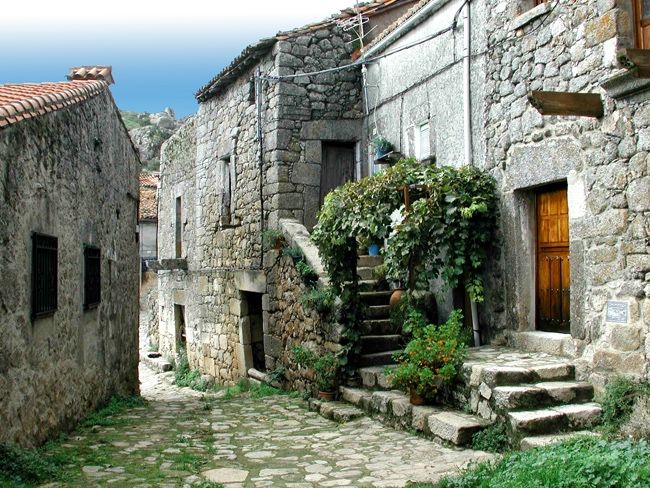
The ruins of its Templar castle crown this small village of just 23 inhabitants. It is worth stopping at the Trevejo viewpoint to observe the romantic silhouette of the remains of its fortification. Although it is of Arab origin, since it was raised by the Muslims to defend themselves against Christian attacks during the reconquest, the remains that are still visible today are three or four centuries later. Alfonso VII of León conquered the fortress and gave it to the order of the Temple. Later, his successor Fernando II de León handed it over to the order of Saint John of Jerusalem, and two years later it passed to the order of Santiago.
The views from the castle are unbeatable and from them, you can see the entire valley of the town of Villamiel. Beneath its walls, you can see the church of San Juan Bautista, declared a site of cultural interest, with its belfry tower and anthropomorphic tombs. These perfectly preserved tombs are believed to have been dedicated to the monks who inhabited the castle, although it is most likely a Visigoth necropolis.
Urueña (Valladolid), the Villa of the Book
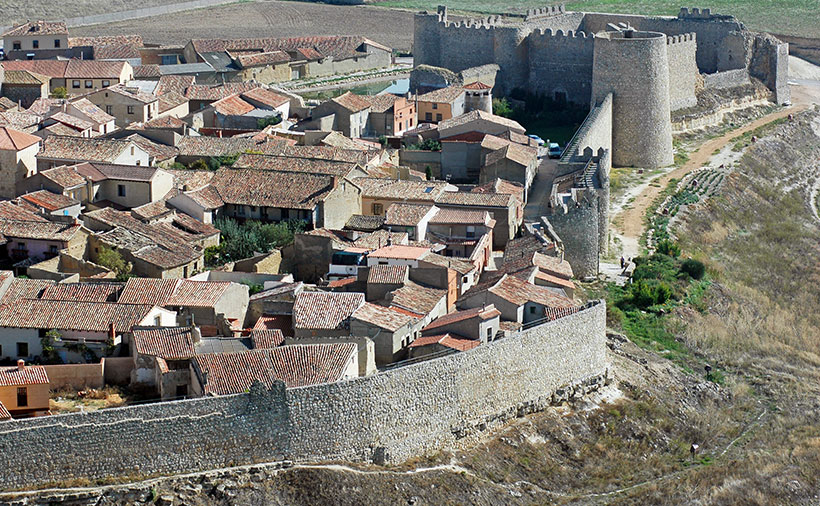
A medieval-style farmhouse and a 13th-century walled complex have given the municipality the status of a historical-artistic complex. Urueña Castle, one of the best-preserved in the province of Valladolid, was the residence of one of the most important characters in the history of Spain: Doña Urraca. It is a town to enjoy the peace and it is worth visiting the fortification at dusk, with the sunset staining the horizon in coppery colours, on which the silhouette of the hermitage of La Anunciada stands out. This temple is the only one that is preserved in Castilla y León in the Romanesque-Lombard style and it is the place that houses the patron saint of Urueña, La Anunciada.
Urueña is the only town with the category of "Villa del Libro", with more bookstores than bars ready to surprise lovers of cinema, photojournalism and ethnography. This category is held by towns such as Wigtown (United Kingdom), Tuedrestand (Norway) or Fontenoy-la-Joûte (France). As an anecdote, for more than 15 years, it was the smallest town in Spain with a bookstore.
Alquézar (Huesca), the Muslim fortress
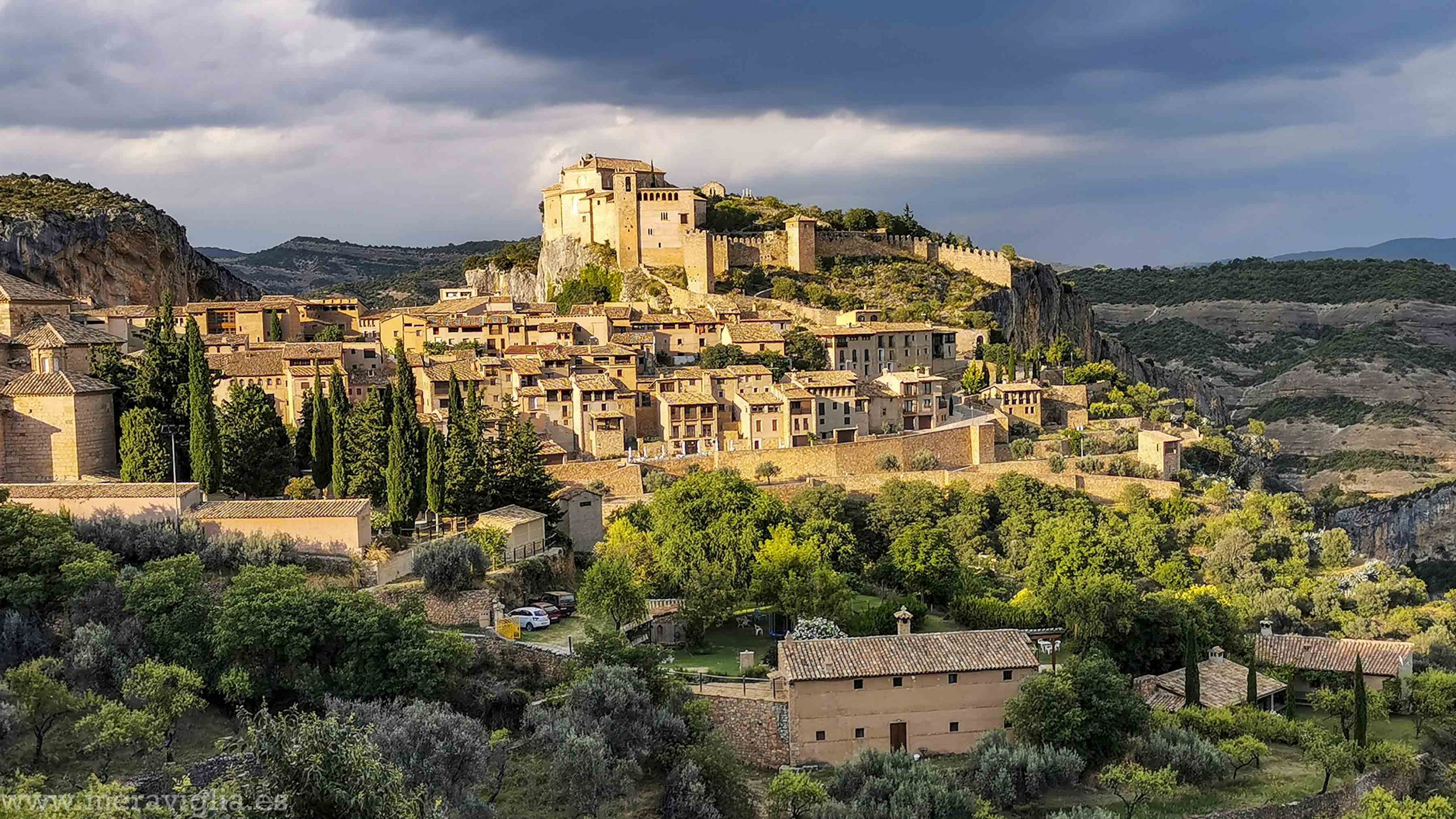
Another place that invites us to disconnect and go back in time is the medieval town of Alquézar, in the Somontano region. The place invites you to lose yourself in its cobbled streets, which form a crescent, in search of its hidden treasures. Alquézar means fortress, and it was one of the main strengths of Barbitania. Jalaf ibn Rasid built this construction at the beginning of the 9th century as a defensive enclave against the Christians.
A curiosity that draws the attention of those who visit the place is the facades of the houses with hanging wild boar legs, as a symbol of protection for the homes. Originally, this villa had three access doors, but today only one of them remains. The collegiate church of Santa María la Mayor is one of the places you must visit. Although its origin is Romanesque, the temple is a 16th-century construction and, inside, it preserves part of the Arab tiles that the primitive Muslim fortress that stood on the site had.
Siurana (Tarragona), the castle on the ravine
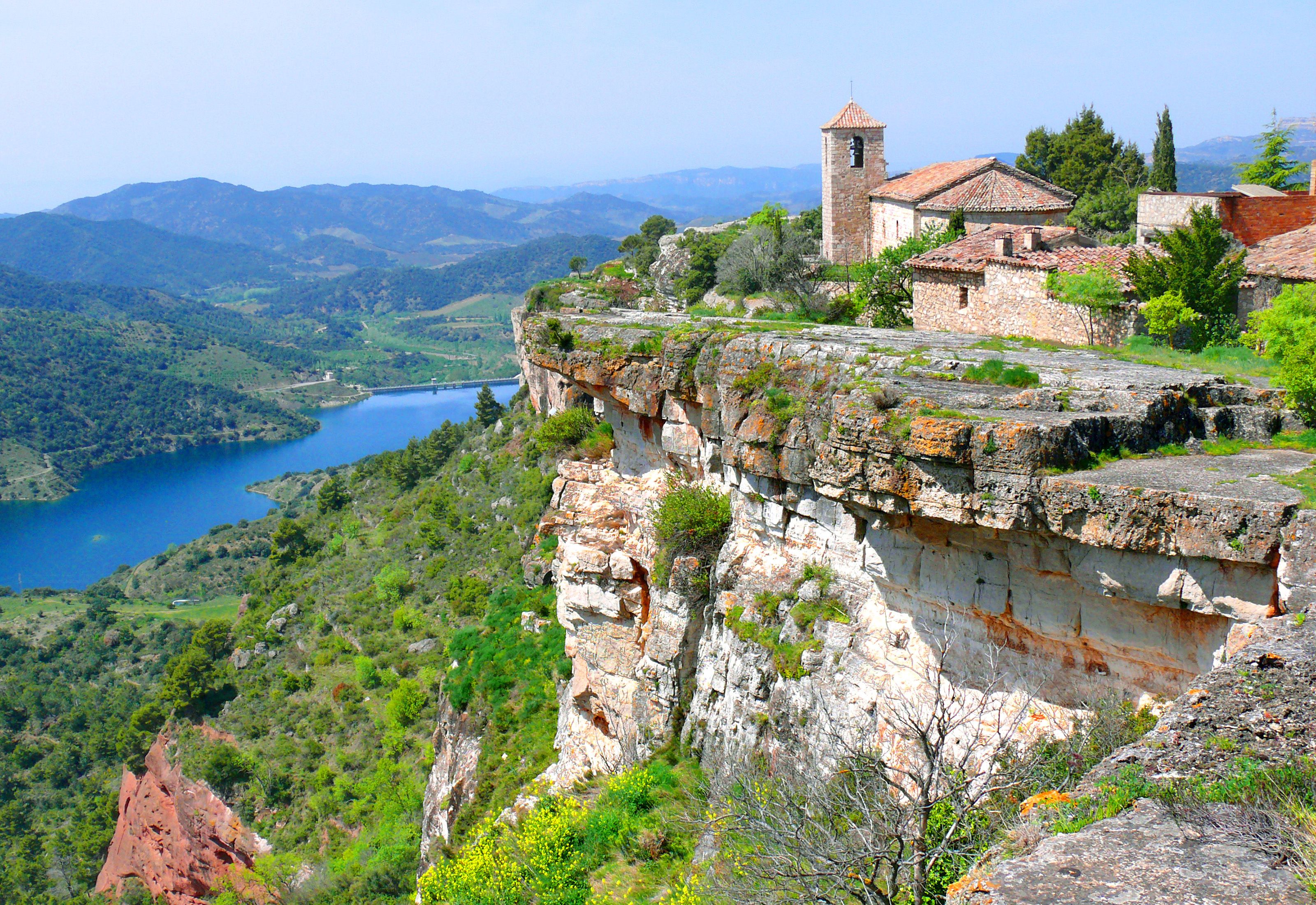
One of the most beautiful viewpoints in Spain is in Siurana. Today it is a place to breathe peace and merge with the beauty of the landscape. The ruins of the castle located 730 meters above the sea, along with cliffs of 250 meters in height, are remnants of the passage of the Arabs through the place and every year attract climbing lovers from all over Europe. The fortress was erected in the 9th century as part of the defensive belt to defend Al-Andalus from the attacks of the Christians from the north.
During autumn and winter, it is difficult for the 27 inhabitants of the municipality to meet tourists on its streets, so it is the ideal place for those who seek to get away from the hustle and bustle of the big cities. As an anecdote, legend has it that when the Christians surrounded the fortress, the Moorish queen Abdelazia mounted on the back of her steed to flee from her enemies by jumping off the precipice and that the horseshoe of her horse was marked on the rock from which it jumped. If you visit the place, you should look for it.
Bagergue (Lleida), the town of flowers
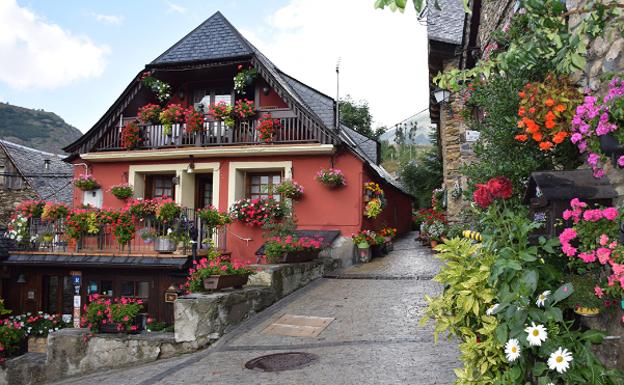
Away from the hustle and bustle, between mountains and green meadows, Bagergue is one of the jewels of Catalonia. The visit to this fairytale town has an obligatory stop at the church of Sant Fèlix and the hermitage of Santa Margarita. It is a town that is worth visiting in the different seasons of the year because in each one of them you will find a different picture. The winters are covered by a white blanket and it is ideal to see the snowfall through the window with a fireplace in the background.
In spring, the place becomes an explosion of colours, which has served to obtain the recognition of "Viles Florides", a distinction that is awarded to villages with the aim of highlighting the natural and scenic wealth of the environment thanks to its gardens, floral ornamentation, homes and recreational spaces. The peculiarity of Bagergue is that it has the same number of hours of sunshine in both winter and summer, making it the perfect place to get away, turn off your mobile and enjoy the silence.